A Guide to the Breads of India
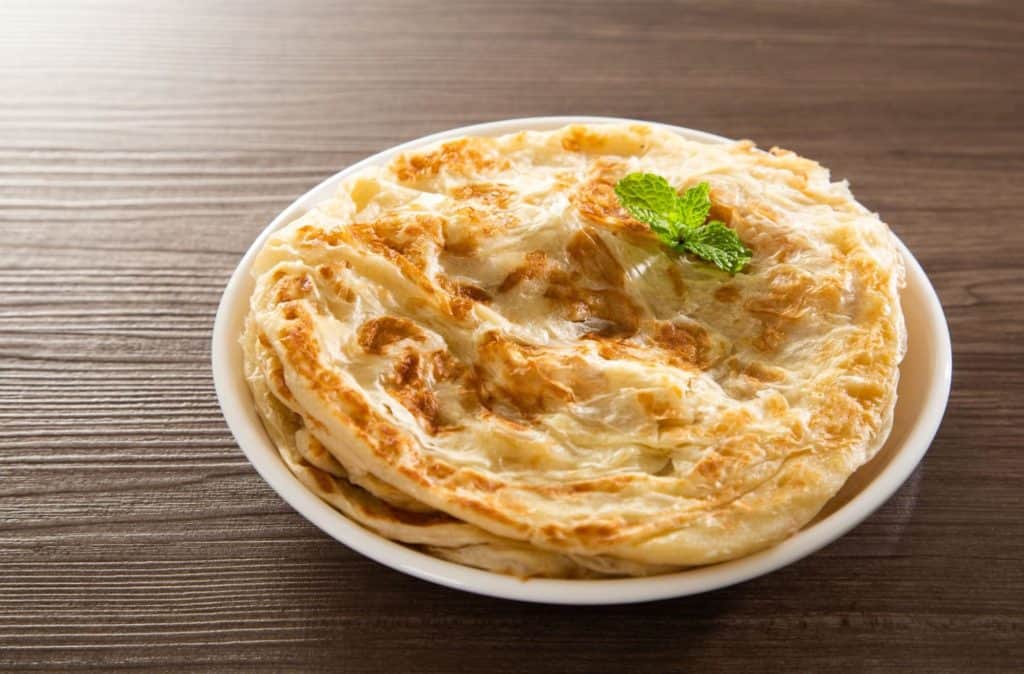
Classic, flaky roti. Crispy, toasted naan. Fried, golden-brown puris.
When you think of the cuisine of India, bread might not be the first food that springs to mind. It’s just an appetizer or side dish, right? Think again.
From toasty, paper-thin crepes to fluffy, pillowy leavened bread, the vast spectrum of bread types in India proves that this corner of Indian cuisine deserves a bigger share of the spotlight. There are dozens of different types of bread made all throughout the country, with each region and each household providing their own twist on a classic recipe.
And remember, most of the Indian breads are actually cooked on the stove, not in the oven as many European countries do. Each flatbread tastes amazing on its own and also makes the perfect pairing with any creamy, meat curries or spiced vegetable dishes.
Let’s learn about eight of the most popular Indian bread types and give you an appetizing introduction to the delicious options on offer in Indian cuisine.
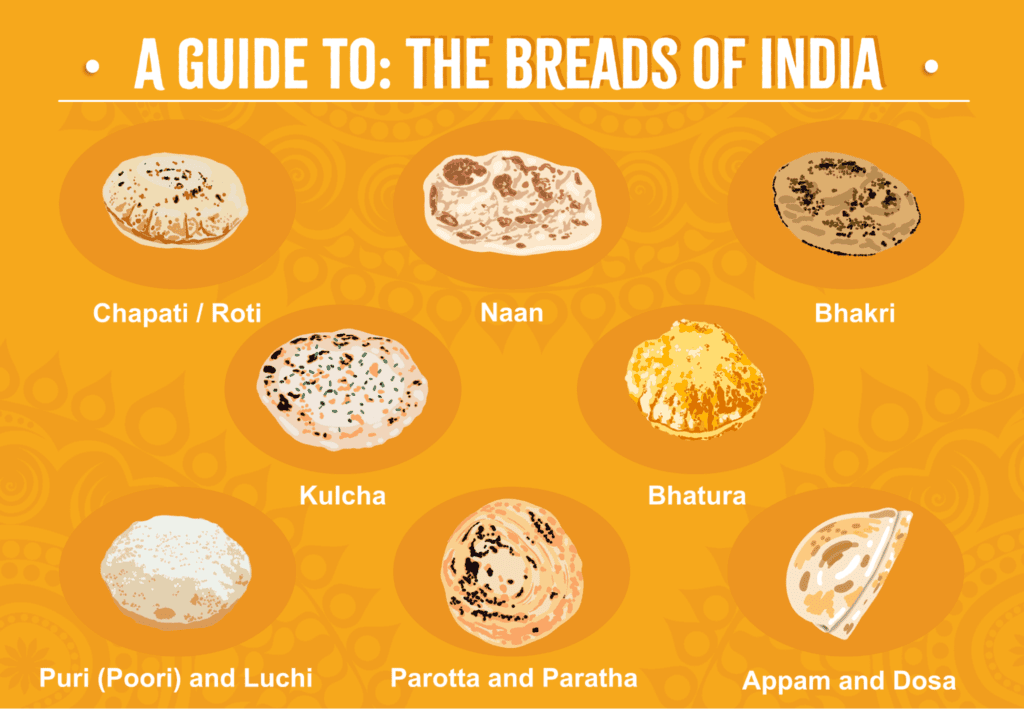
Chapati / Roti
Whether you call it chapati or roti, this bread goes by many different names and is perhaps the most popular flatbread in India.
Made of a simple recipe of wheat flour and water, every household in India has its own signature take on this Indian flatbread. Some prefer their chapati with a splash of oil; some sprinkle a healthy serving of salt. Many love to layer their roti with rich, delicious ghee (clarified butter) to infuse it with an extra burst of flavor.
Chapati is most commonly made on a flat tawa (cast-iron frying pan) though it can also be roasted over an open flame to create the phulka version of roti, a puffed-up balloon of airy flatbread due to the accumulation of steam.
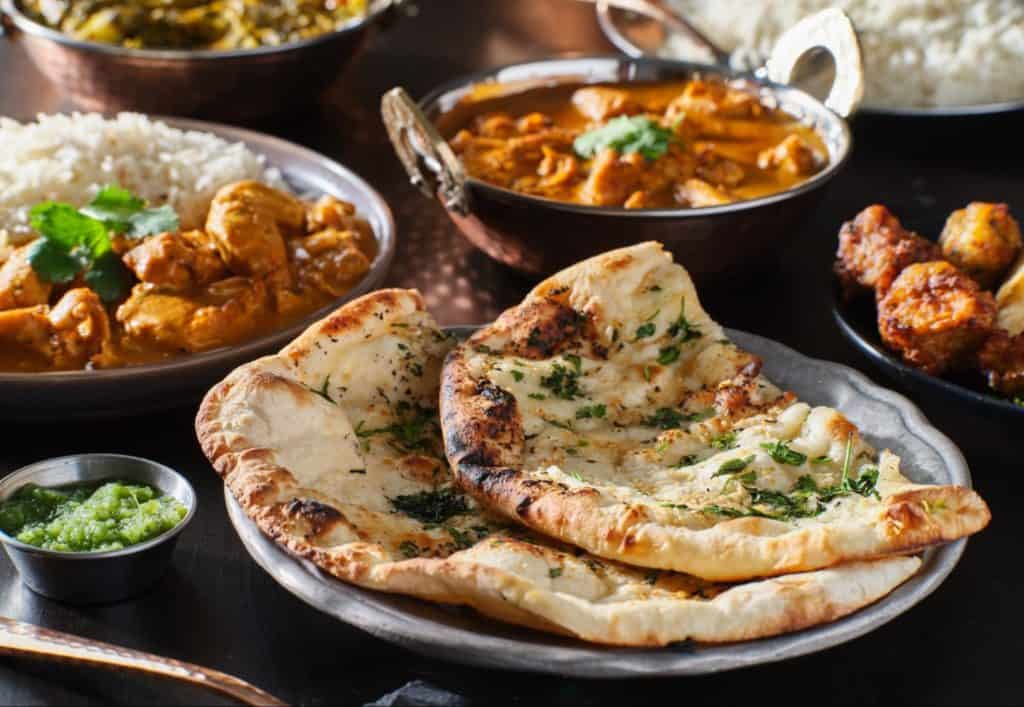
Naan
When it comes to roti vs naan, this leavened bread is much fluffier than its flatbread cousin and certainly wins out in popularity in Indian restaurants in the United States. In India, naan is viewed more as a specialty bread or a treat, and is usually eaten when dining out rather than in the home.
With its signature pillowy texture, naan is the perfect companion for Northern Indian dishes like Roasted Tomato Curry w/ Chickpeas or Chicken Tikka Masala. Naan comes in dozens of different variations from the classic plain and crispy, to buttered and topped with diced garlic, or stuffed with fruits and nuts in the Kashmiri style.
This fluffy, leavened bread is the perfect snack and side for any occasion. Naan is best eaten fresh out of the tandoor (a traditional cylindrical high-temperature stove), though it can also easily be made in your home oven.
A key tip for making the most of your naan is to brush it with some butter or ghee just before serving to complement the natural grilled flavor of the bread.
Parotta and Paratha
While these two types of flatbreads are often lumped together, the signature difference between the two lies in their main ingredient — parotta is made of maida (highly refined, bleached wheat flour) while paratha uses an atta base (milled flour made from whole wheat grains).
Originating from Southern India, traditional parotta is a layered flatbread made from a simple recipe of maida, salt, oil, and water.
Malabar Parotta is one of the richest variations of this widespread dish. This recipe is layered with high amounts of oil, making it jam-packed with flavor and one of the more decadent options on offer in Indian flatbreads.
In contrast to parotta, a delicious paratha’s signature flakiness comes about due to a series of ghee-layering and folding — similar to those techniques used in making a buttery pastry.
After the folding process is completed, parathas are baked on a hot tawa to lock in the rich flavors, leaving you with a crisp, buttery flatbread that holds its own against creamy curries and spicy dishes.
There are two main types of parathas — plain parathas and stuffed parathas. Stuffed parathas come in dozens of delicious veggie variations like radish, cauliflower, potato, or paneer. Piping hot stuffed parathas are often a meal in themselves as they are very filling, and are best served with yogurt or raita on the side for easy dipping!
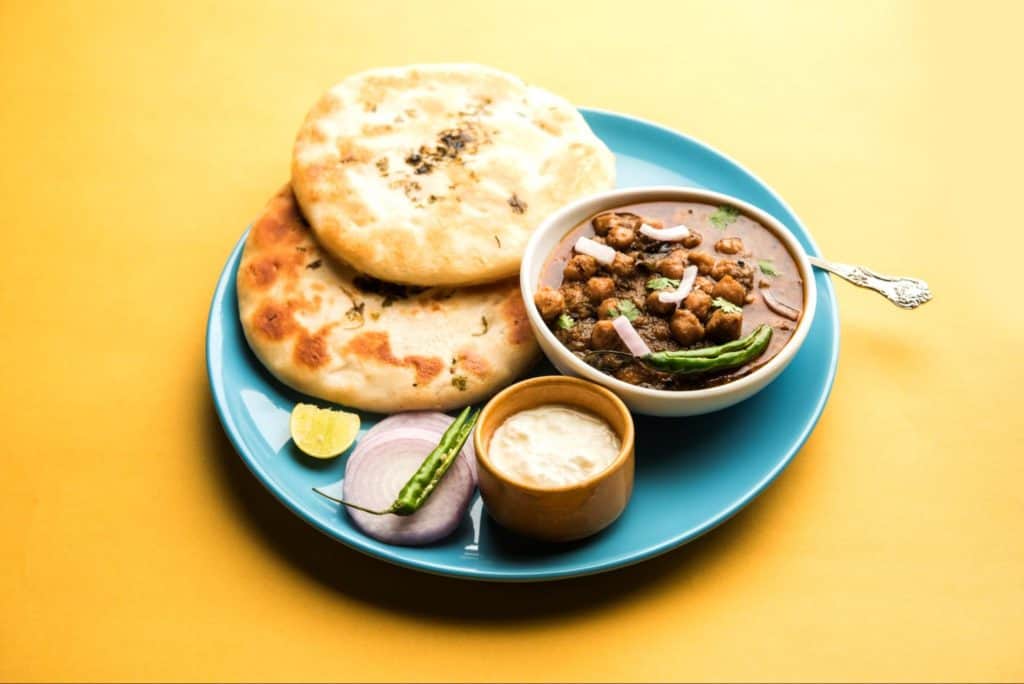
Kulcha
This next bread is often confused with naan due to its similar appearance. While naan is usually made with yeast and yogurt or milk, kulcha is usually made with baking powder and baking soda.
One of the most popular forms of kulcha is Amritsari Kulcha, originating from the Punjabi city of Amritsar. This kulcha is known for its crispy outside brushed with a rich coating of ghee, which strikes a delicious contrast to the spiced potatoes inside and makes Amritsari Kulcha one of the most filling and indulgent Indian breads out there.
Puri (Poori) and Luchi
Puri is a mouthwatering Indian unleavened bread that balloons in size once the dough strikes the oil. Puffing up to a golden, crispy ball, puri is made even more delicious when served alongside curried potatoes or chana masala.
Luchi is very similar to puri but originates from Bengal. It’s generally smaller and lighter than puri and is one of the most coveted breakfasts and street foods in Kolkata.
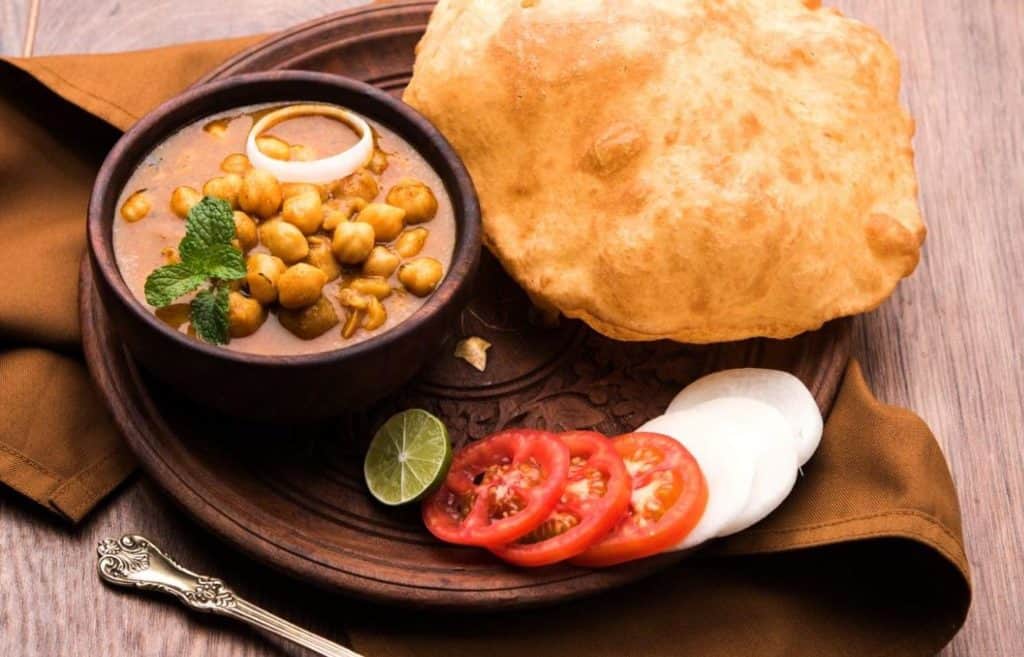
Bhatura
Bhatura is a delicious leavened bread made of a batter of maida, yogurt, ghee, and yeast. It is deep-fried and puffs up, similar to a puri, when simmered in hot oil. Most popular in the northern Indian region of Punjab, Chole (chickpeas) Bhature is an indulgent weekend brunch specialty.
It is served with chana masala, pickled red onions, and a refreshing glass of lassi, a refreshing yogurt drink served either sweet or salted.
Indeed, bhatura is so popular that it has a whole day dedicated to its greatness — October 2nd is World Chole Bhature Day.
Mark your calendars to give bhatura the attention it deserves!
Appam and Dosa
Most popular in the Indian regions of Kerala and Tamil Nadu, appams are the first Indian bread dish on this list to be made from fermented rice batter.
Appams are crispy and soft on the outside with a chewy center, making them the perfect pairing for spicy stews and sweet coconut milk dishes.
Neyyappam is a buttery variation of appams adding jaggery (sugar cane and palm sap) and ghee to the rice batter mixture, while vattayappams take up the sweeter side adding coconut flakes and sugar to satisfy any sweet tooth.
India isn’t the only country to lay claim to appams — they’re also incredibly popular in Sri Lanka made with an egg base and known as hoppers.
Just like appam, dosa is made from fermented rice batter and is one of the most popular bread types in all of India. It’s similar to a crepe in look and texture and makes a delicious breakfast or lunch when served alongside turmeric-spiced potato filling, sambar on the side, and coconut chutney.
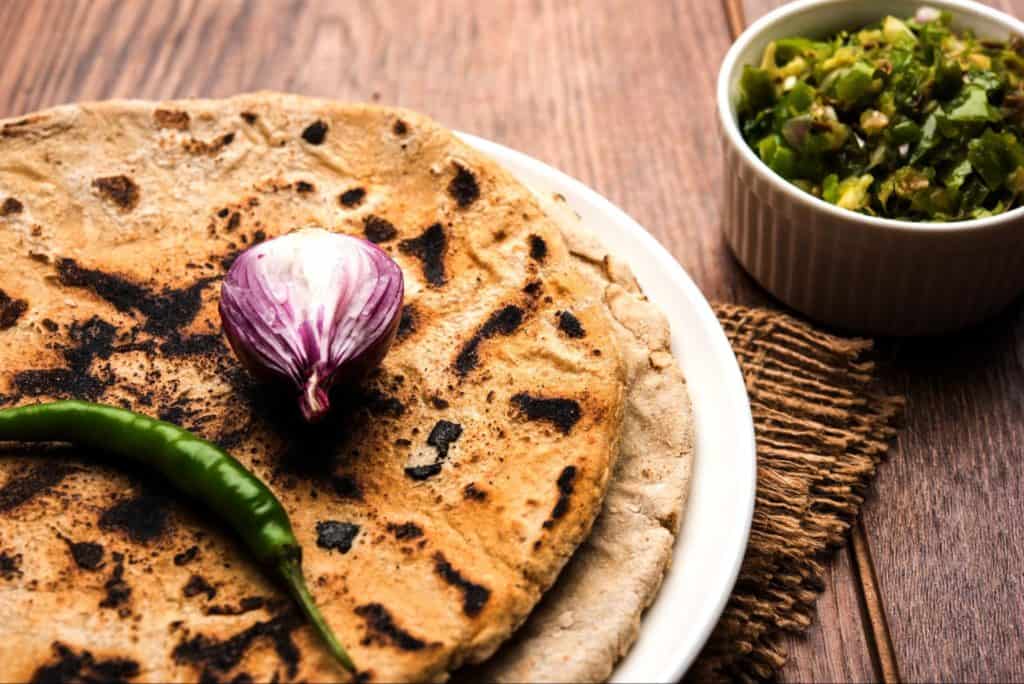
Bhakri
Most popular in the Indian states of Gujarat, Rajasthan, and Maharashtra, bhakri is a hearty flatbread slightly thicker than roti because it’s made with sorghum flour or millet flour. These grains are known to be more coarse than wheat flour, but also more nutritious and packed with more dietary fiber.
The classic bhakri is cooked over a hot tawa with a quick brush of ghee at the end to soften the bread. If you ever make it to the Indian countryside, you’ll find that Indian farmers love taking bhakri out to the fields and eating it alongside yogurt, baingan bharta (spiced eggplant), and spiced chutneys.
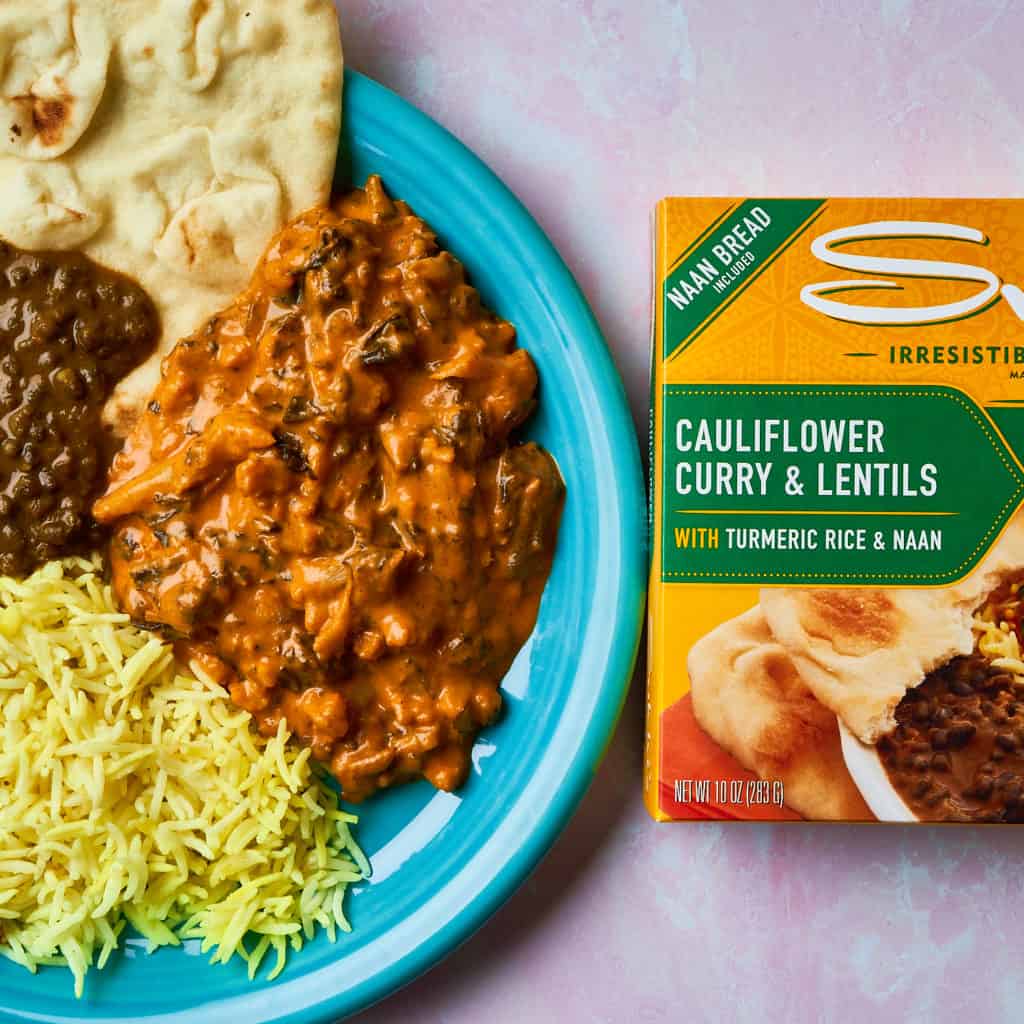
Enjoy Your Indian Bread With Sukhi’s
Even after our detailed exploration of these eight different Indian bread types, we’ve still only scratched the surface of the scrumptious options on offer within Indian cuisine.
Hundreds of different regions have put their own spin on each of the flatbreads mentioned above, creating near-infinite variations and unmatched flavor.
No matter which dish you go with, Indian flatbread is the perfect company for your next spiced curry, creamy masala, or rich yogurt dish.
To give each flatbread the culinary company it deserves, look towards Sukhi’s convenient Indian meals like Chicken Vindaloo, Roasted Tomato Curry, or our delicious Cauliflower Curry with flaky naan included!
While you’re waiting for your order to arrive, browse our blog for more deep dives into Indian cuisine and recipes designed to make every family dinner one to savor.
2 responses to A Guide to the Breads of India
[…] Chapatis […]
Probably the most impressive point is the flavor of the sauce. I love the softness of the noodles combined with these sauces.